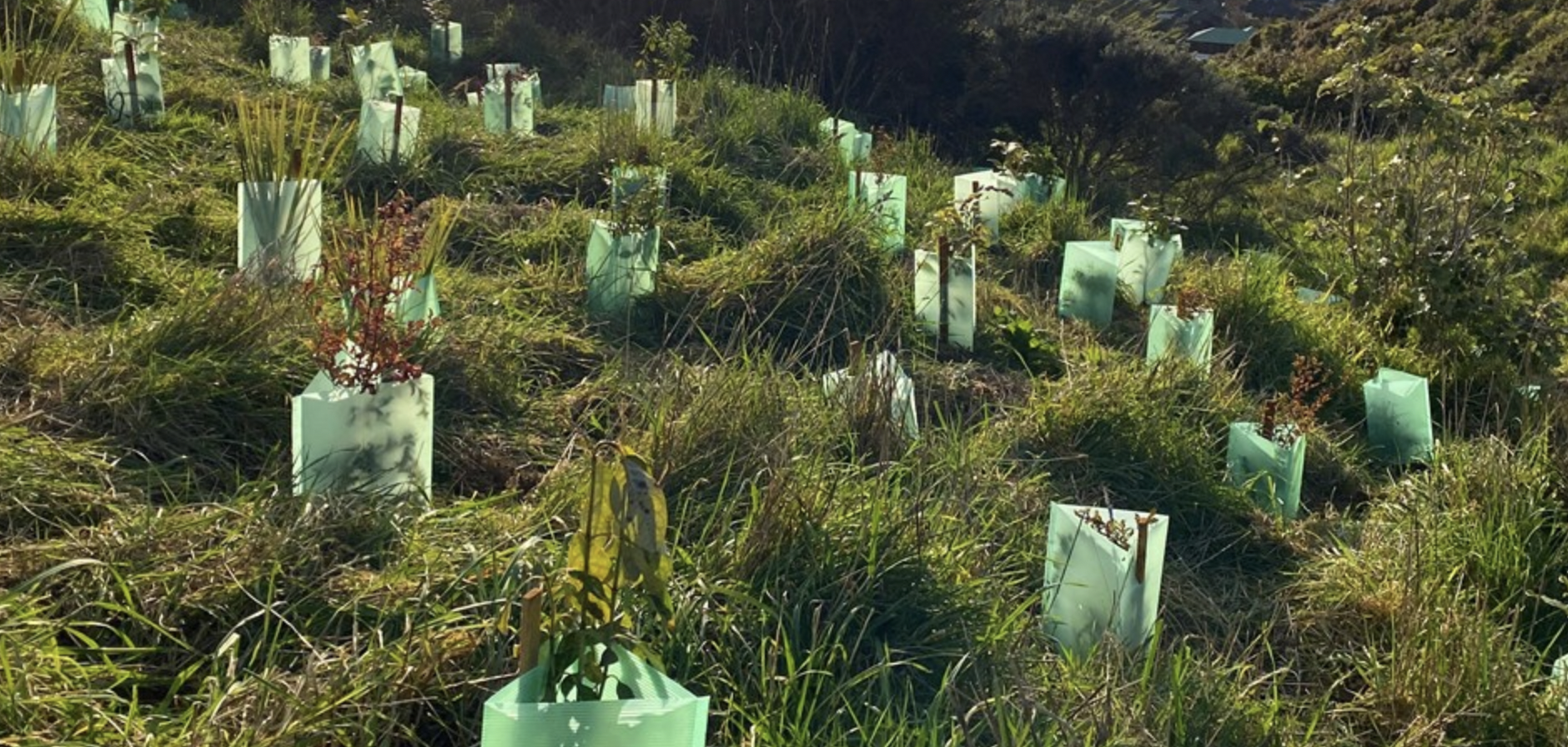To Protect or not to protect?
Plant guards or tree protectors placed around newly planted native seedlings are sometimes used to provide protection from wind on exposed sites or during hot dry months, and reduce browsing by animals such as rabbits and hares. Selection and use of plant guards will hinge on a number of factors, as every planting site is unique. You’ll need to consider the scale of your site, what you can realistically commit to manage and maintain, and the key issues where guards may be beneficial to the growth of your plants.
Reduce, reuse, recycle
Let’s consider the environment first and foremost: cardboard guards are biodegradable, whereas most (if not all) of the commonly used plastic ones are not. While plastic versions can be reusable, recovery of guards from around established plants can be a lot of work, and they may even need to be cut to be removed.
In reality, plastic guards are often not recovered and left to deteriorate and pollute the environment. Some groups very successfully reuse plastic ones after timely removal a year or so after installing to then shelter new plants, but it is labour-intensive and perhaps more practical for community volunteer groups with a good roster of labour.
Rain safe?
Some of the early guard versions of sacking or jute we’ve used in planting trials became very heavy in rain and collapsed inwards, but there now seem to be newer versions with lighter material and/or improved bamboo staking to mitigate this problem. Cardboard guards are rigid enough to avoid collapsing onto the seedlings when they get wet, but it’s unclear how long they will last especially in wetter climates when re-used.
Temperature wise
A major plus for cardboard guards—especially when light coloured—is that they don’t heat up during the summer months like some plastic versions. We’ve had plants, particularly large-leaved natives, cook inside tall plastic corflute guards in the summer months. This can be overcome by punching holes in the base of the sides to create air flow: but again, there’s another job for an already busy planter.
Bee-ware
A word of waspy warning is that we have very occasionally seen paper wasps who mine the cardboard and build their small nests on the inside, which can be an issue when releasing or monitoring seedlings on hot summer days. This will be both a seasonal and regional issue only, but one worth considering where paper wasps occur!
Top tip
It is better to use guards in combination with a jute or coconut matting to prevent weeds growing up inside. The weeds within the shelter of guard can thrive and compete with the planted native seedling and can be difficult to remove.
Price point
Tree guards can add $1.50 to $2 (some $3) to each plant, a significant cost depending on size of orders (bulk orders can mean reduced rates in most cases). The plastic Combi guards are around $1.30 each, while alternative biodegradable sacking guards can range from $2.
Watch when comparing costs—check whether a fibre mat is included along with robust bamboo stakes for holding up the guard. There are also various height options where taller guards could deter more elevated browsing (by hares, for instance).
To reduce cost and time you could consider using tree protectors only on the more sensitive and palatable tree and shrub species, and leave them off less palatable natives (there are only a few!) like mānuka and kānuka.
Testing, testing, 1 2 3
Always test out the effectiveness of tree guards for your site and region with a small trial planting of with- and without-guards for the same species planted adjacent to each other on the same site. See what others are using locally for protecting their plantings and check how they are going.
For more information https://www.


